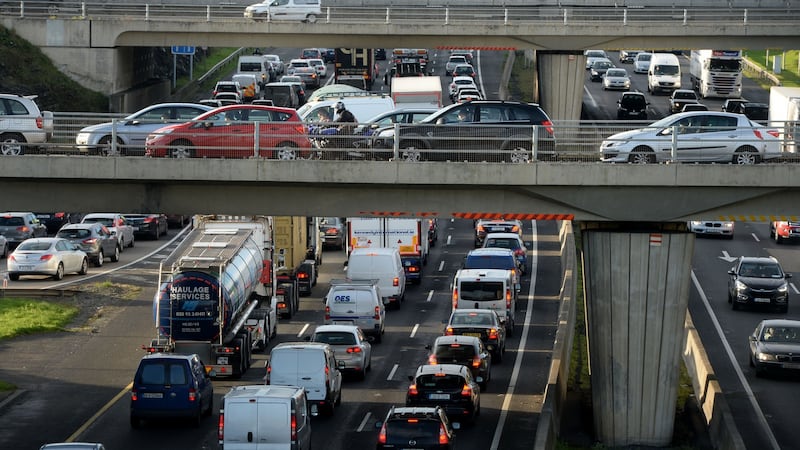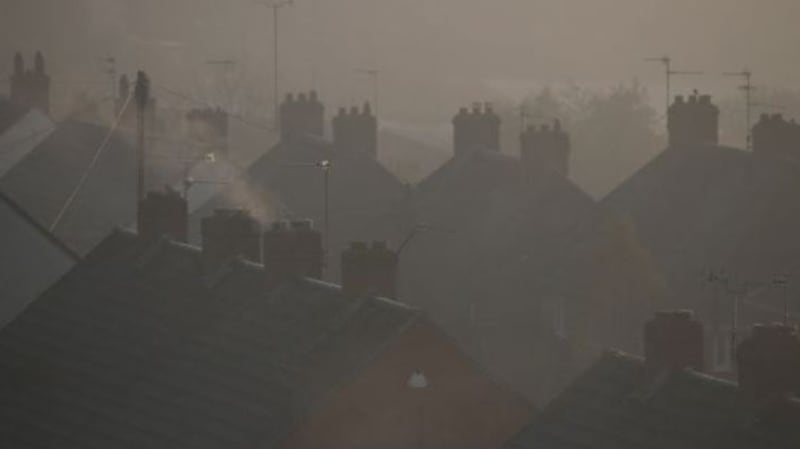Air pollution in Dublin at the weekend was back to levels not seen since before the ban on smoky coal was introduced 30 years ago.
Data from the Environmental Protection Agency confirmed air pollution levels in Rathmines and Ringsend were up to 15 times higher than EU and World Health Organisation guidelines on Saturday night last.
Scientists at University College Cork, led by Prof John Wenger, who study the data said guideline limits were also breached consistently last week in a range of towns and cities including Ennis, Tralee, Cork city, Macroom and Enniscorthy.
Air pollution causes 1,300 premature deaths in the Republic each year, according to the EPA, and the authority’s State of the Environment 2020 report, published last week, and its Air Quality Report, published in October, warn of serious health implications from fine particulate matter in air.
Fine particulate matter (PM) is suspended dust that, when inhaled, has an adverse effect on respiratory diseases and is associated with chronic obstructive pulmonary disease, bronchial asthma, strokes, heart disease and some cancers while increasing the mortality rates of these diseases.

PM2.5 is associated with pollution from burning solid fuels, while PM10 is associated with pollution from traffic. WHO air quality guidelines stipulate that PM2.5 should not exceed 10 micrograms per cubic metre, or 25 micrograms on a 24-hour average. However, last week these limits were exceeded frequently, with recorded levels of PM2.5 reaching almost 400 in Ringsend, and more than 300 in Rathmines.
Levels in some towns across the country were as high, with Ennis, Co Clare reaching 393.23 on Sunday night.
Weather conditions
According to Prof Wenger certain weather conditions such as a lack of wind combined with geographical features such as surrounding hills, can cause smoke from fossil fuels to remain in place, resulting in serious air pollution.
In Dublin at the weekend, he said, winds were very light and smoke remained in place over the city as people lit fires from about 5pm onwards. “Saturday was back to the days of Dublin before the smoky coal ban,” he said. This would have serious health implications for residents, he added.
James Glynn of Science Foundation Ireland’s MaREI Centre, in the Environmental Research Institute of University College Cork, said “any analysis we do shows coal and peat has no place in the energy system any more”.
He also said a number of recent international studies have shown a link between mortality from Covid-19 and air quality.
Pat Kenny of the EPA said air quality was cited as the cause in 1,300 premature deaths each year and a national clean air strategy, which was expected to include a public consultation in the near future, was being drafted by Government.
Divergent rules
However, Labour Party leader Alan Kelly who has campaigned for a smoky coal ban to be extended across the entire country, said the Government was not moving fast enough. He said he was “sick and tired” of pointing out the farce that “some towns do and some towns don’t” have such a ban. He said fuel poverty among some of the population was cited as an excuse for not having a widespread ban, but he said the Government had the ability to alleviate that in a number of ways, including through tax measures.

In September of this year, the ban on the burning of smoky coal was extended to an additional 13 towns. However, there are still 61 towns that do not have any such bans.
The most recent EPA Air Quality Report said WHO guideline values for air quality were exceeded at 33 EPA monitoring stations, “mostly due to the levels of fine particles in our air”. The report notes that “any movement towards cleaner modes of home-heating fuels will have a subsequent improvement on air quality”.














